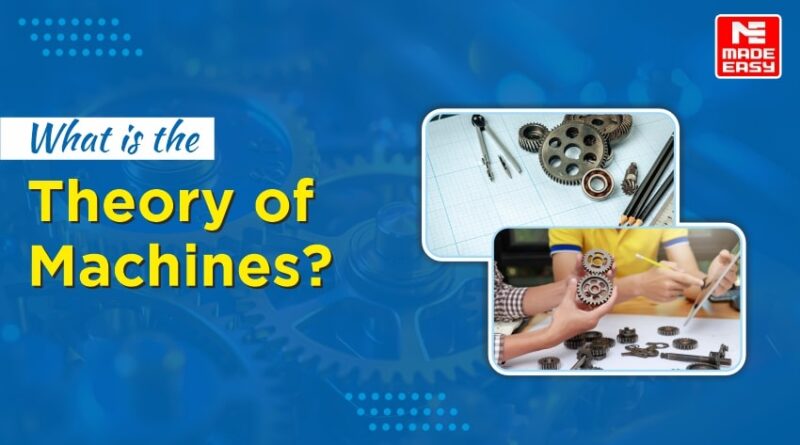What is the Theory of Machines?
Theory of Machines – Mechanical Engineering
The theory of machines is an applied science which is used to understand the relationship between the geometry and relative motions of the parts of a machine or mechanism and the forces which produce these motions. It comprises the study of relative motion between the various parts of a machine and the study of the forces that act on those parts.
The major objectives of the subject Theory of Mechanisms and Machines are to provide the engineers the necessary tools to systematically synthesize a system which means scientifically arriving at the critical shapes and dimensions of the bodies constituting the system.
Given below are the links to some major and important topics related to theory of machines that will be beneficial for aspiring mechanical engineers:
Key Concepts:
- Types of Constrained Motion
- Degrees of freedom
- Four-Bar Mechanism
- Theory of Instantaneous Center
- Coriolis Acceleration Component
- Klein’s Construction
- Types of Cam
- Classification of Gear
- Static Balancing
- Compound Gear Train
- Type of Governors
- Types of Vibration
- Gruebler Paradoxes
- Transmission Angle
- The Slider Crank Chain
- Klein’s construction
- Pantograph
- Straight Line Mechanisms
- Hooke Joint or Universal Coupling
- Cam Nomenclature
- Gyroscopic Effect on Aeroplanes
Courses for Theory of Mechanics (ME):
Having in depth knowledge and right guidance from the experts is very important to achieve success in engineering exams especially GATE, ESE, SES and many others. Especially the rigorous competition in mechanical engineering requires correct strategies and dedication to score well and have a career growth. MADE EASY courses are meticulously curated by our experts which primarily focuses on teaching from the basic level to the advanced level. Candidates who are interested in learning mechanical engineering from the basics, including theory of machines and other key topics, from renowned experts are advised to click on the below-mentioned ME courses:
- GATE : 1 Year Foundation Course
- ESE+GATE : 1 Year Foundation Course
- GATE + SES (GS) : 1 Year Foundation Course
- GATE & SES (GS) 2025-26 Live Online Foundation Course
- ESE + GATE + SES (GS) 2025-26 Live Online Foundation Courses
Recommended Books for Theory of Machines
Books are still an essential part of learning as they offer in-depth knowledge in various topics. Learning books are well structured and provide comprehensive understanding making them invaluable for students and lifelong learners. MADE EASY Publications is one such platform for students who are looking for high quality and well structured content for their preparation. Our platform consists of government engineering exams books which are curated by a team of experts and experienced authors.
Mechanical engineering aspirants are suggested to click on the links mentioned below to learn more in depth about theory of machines:
- Mechanical Engineering- Practice Book for Junior Engineering
- GATE-2025: Mechanical Engineering Previous Year Solved Papers
- A Handbook on Mechanical Engineering
- ESE 2025: Preliminary Exam: Mechanical Engineering Objective Solved Paper Vol-1
MADE EASY Practice Program: Theory of Machine
FAQs:
1. What is the classification of cams?
Ans. Cams are according to:
- Shape
- Follower movement
- Method of constraint of the follower
2. What is the classification of gears?
Ans. Classification of gears is in three categories:
- According to the position of axes of the shaft
- According to the peripheral velocity of gears
- According to the type of gearing.
3. What is a slider crank chain?
Ans. When one of the turning pairs of a four bar chain is replaced by a sliding pair, it becomes a single slider crank chain or simply a slider crank chain.
4. What is a pantograph used for?
Ans. A pantograph is a four-bar linkage used to produce paths exactly similar to the ones traced out by a point on the linkage. The paths so produced are, usually, on an enlarged or reduced scale and may be straight or curved ones.



